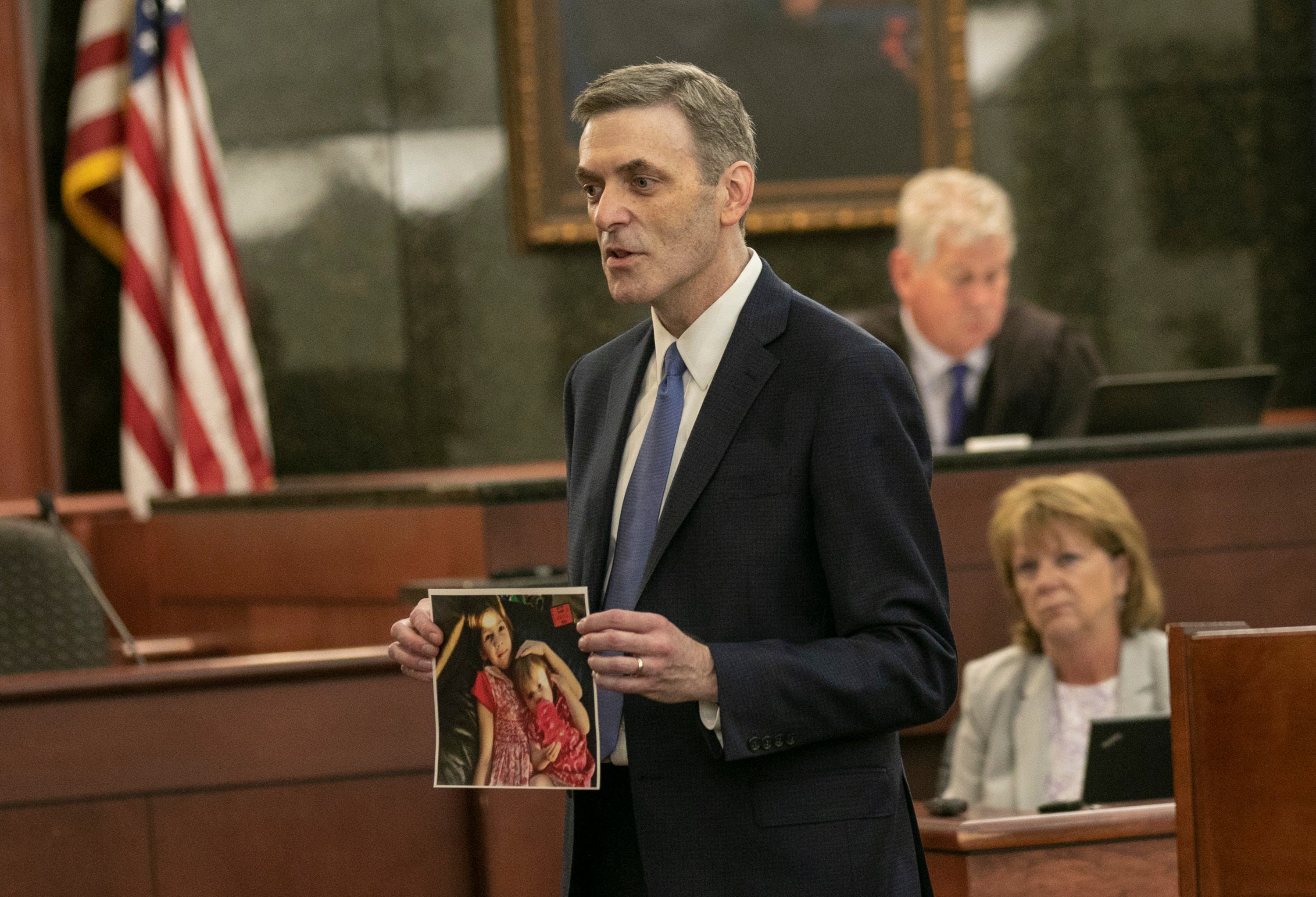Man's death penalty appeal may turn on photos of 5 dead kids
South Carolina Supreme Court justices are questioning whether a prosecutor offered to show photos of five dead children to a jury to unfairly upset them so they would sentence the killer to death

South Carolina Supreme Court justices on Tuesday questioned whether a prosecutor offered to show photos of five dead children to a jury to unfairly upset them so they would sentence the children's father to death.
The photos of the children were entered as court records at the last moments of the trial just to shock jurors, argued attorney Robert Dudek, who wants Jones’ 2019 conviction on five counts of murder and death sentence overturned. The images were taken nine days after the children were killed and after Timothy Jones tried to hasten their decomposition.
“I've done this for over 30 years and those are about impossible to look at. They are horrific under any definition. Here you have 12 jurors off the street seeing photographs of dead children,” said Dudek, who is chief appellate defender for the South Carolina Commission on Indigent Defense.
Solicitor Rick Hubbard, making a rare appearance by a trial prosecutor before the state's highest court to justify his own actions in Jones' trial, said he has learned jurors lose trust in a prosecutor when he shows them horrific photos on his terms.
That's why Hubbard said he told them in his closing statement if they needed further proof, the envelope with the photos of the children in garbage bags were in the jury room and "if you have any doubt for the appropriate sentence for that man, look in the bag!”
“They get offended at me when I hold up photos that are hard,” Hubbard said. "So I let them do it on their time.”
The justices will rule at a later date.
Jones killed his five children, ages 1 to 8, in their Lexington home in August 2014. He had custody of them after divorcing his wife.
Prosecutors said after he killed his 6-year-old son, Nahtahn, for defiance, he decided to kill the rest of the family to cover up the crime.
Jones drove around the Southeast with their bodies for nine days before dumping them in garbage bags on the side of an Alabama dirt road.
Jones' lawyers argued he was not guilty by reason of insanity. They said he didn't know right from wrong either morally or legally because his brain was broken by undiagnosed schizophrenia amplified by stress from a failed marriage and struggling to raise his children alone.
The photos were just one of a half-dozen reasons Jones' lawyers want his conviction and sentence tossed out. They also said a judge should have told jurors that being found not guilty by reason of insanity didn't mean Jones would walk out of the courthouse a free man. Instead, he would be kept in custody for several months or up to the rest of his life if his mental condition never improved.
Attorneys for Jones said a judge should have allowed jurors to see a videotape of Jones' mother, who had been ordered to remain in an out-of-state mental hospital for decades because of her schizophrenia, a diagnosis her son was aware of and made him angry and nervous.
Jones' lawyers also said the case should be overturned because Circuit Judge Eugene Griffith refused to allow testimony from a defense expert witness who planned to say a prosecution witness erred when scoring a physiological test that found Jones was exaggerating his symptoms of mental illness.
But much of the arguments Tuesday centered around the photos of the dead children. Defense attorneys tried to show them to the jury before they found Jones guilty, saying the condition of the bodies helped show he was insane. Prosecutors objected, and the judge agreed.
Dudek said the defense lawyers also figured prosecutors would wait and use the photos in final moments before the jury started deliberating whether Jones should die for his crimes and wanted to lessen their impact by using them earlier in the trial.
Justices asked Hubbard why he asked to include the photos after having Dr. Janice Ross testify in grim detail to the conditions of the bodies — including saw marks on his 2-year-old son's leg — and what Jones had done to try and hasten their decomposition.
“The way he treated those bodies with contempt. We had Dr. Ross say here was a disarticulated leg, referring to bag three with Gabriel, the 2-year-old," Hubbard answered. "But you had to look to see what she meant.”
Before Hubbard spoke, Associate Justice John Kittredge wondered aloud why the prosecutor risked what appeared to him to be an airtight case. Kittredge cited a 2010 ruling by the state Supreme Court where they warned prosecutors that submitting photos of a Spartanburg couple who were beaten to death and burned by a man pushed the outer limits of what judges should allow.
“Stop it! Stop this nonsense,” Kittredge said. “The pathologist testified in great detail as to what the pictures depicted, but we just got to throw the autopsy pictures in there to stir the pot. I don’t know what it is going to take to stop this.”
___
Follow Jeffrey Collins on Twitter at https://twitter.com/JSCollinsAP.
Bookmark popover
Removed from bookmarks